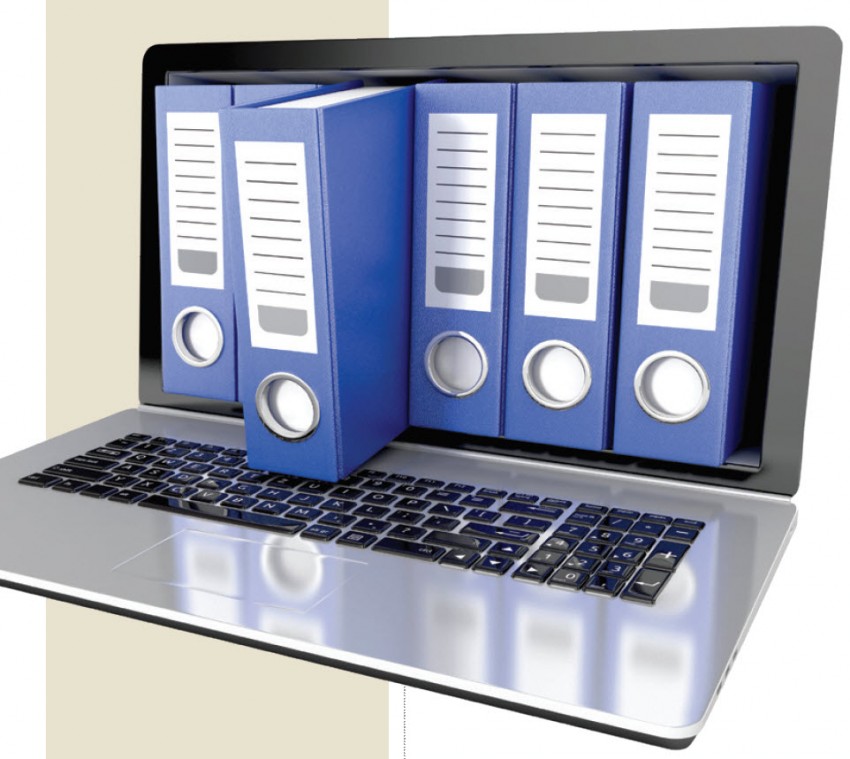10 Key Records Management System Considerations
Perfect Ten
While Information Governance (IG) is the overall framework for managing all types of corporate information, Records Management (RM) is the specific area of IG that allows you to manage and control documents according to a records policy and records retention schedule (RRS). An RRS allows you to assign retention periods to documents, data, records, and emails and to be able to archive or destroy this content when the retention period has been completed. In addition, RM software allows you to suspend or hold the retention period when documents are part of a legal action so that the documents are preserved in their original state if needed.
If you are considering implementing RM, here are 10 important considerations:
- RM CAPABILITIES
You will need a document management (DM) or electronic content management (ECM) system that includes RM capabilities. If you have an existing DM or ECM system and it does not have RM capabilities, you will need a standalone RM system. So, purchase a system with RM capabilities, or possibly add an RM module onto the existing system.
- DOCUMENT OR RECORD?
Most organizational documents and information are not records. It has been stated, in many articles and conferences, that the actual number of “business records” in a company can be 1% or less. So, we are talking about picking expensive needles out of haystacks! However, some records may need to be managed under the broader IG program, so it is important to update and align your RSS to the overall IG program.
- RSS IMPORT FUNCTION
Although obvious, you need an RRS that can be imported into your DM or ECM system. Don’t expect users to manually classify a document by reviewing a separate retention schedule––for example in an Excel spreadsheet, Word document or a piece of paper. Using auto-classification is the recommended method to classify records in a DM or ECM in order to ensure retention is applied.
- PAPER AND ELECTRONIC (HYBRID RECORDS MANAGEMENT)
RM applies to both paper and electronic documents—be prepared to do both—and make sure your RM software handles both paper and electronic. Not all RM systems do both, so be sure to check. RM may also apply to other physical media such as USB drives, external SSD drives, and tapes, etc.
- AUTO-CLASSIFICATION
Using auto-classification technology tools is preferred. However, if you are going to grant users some autonomy in declaring records, users must be trained to select the right retention category for their document and do it quickly. If not, users may not do it or continue to use the one category that they know about. RM training must be available in some manner: online, in person, lunch sessions, reference documents, and be listed on your mandatory training schedule. Also, see #10 below.
- RM CUSTODIAN
Some companies have a designated RM custodian that transition documents to “declared record” status so the average office worker is not responsible. This requires that you have a RM custodian for each business unit who is a SME for both content and records categorization.
- RECORD DECLARATION
Why be so careful in “declaring a record?” Because once a document is declared a record, you may not modify or delete it until the retention period is completed. (Under certain circumstances, you may “undeclare” it, depending on the RM software, and this usually involves multiple people providing permissions to undeclare the record. Also, a System Admin may be required to make the change.)
- RECORD DESTRUCTION
As part of the initial setup, you must decide what to do with a record when it becomes due for destruction.
- Destroy it automatically without review (see #9 below);
- Have your RM Custodian responsible for that business unit review and approve/initiate the destruction;
- Extend the retention time to a future date (you can keep a record longer, but not less than the scheduled time).
9. RECORDS HOLDS
You will have to incorporate holds into the records management program and software. Holds can be a complex undertaking and may require the legal department to participate, as well as the business units and the software system admins. It also means that the RM software must have this function.
- Legal holds apply to all related documents, whether they are a record or not;
- Legal holds suspend the retention activities for all documents (paper or electronic, record or non-record) until removed from legal hold;
- Legal holds must be noted in the RM system to prevent auto-deletion (if used) and to search for those documents. A field with the legal hold number is typically used;
- Paper documents may need to be collected and set aside or somehow restricted from being deleted or changed;
- Someone, in the applicable business unit, needs to apply the legal hold to the specified documents (which could be many and include both paper and electronic);
- Someone, in the applicable business unit, needs to remove the legal hold when it is rescinded so documents can resume their normal retention schedule;
- You should read up on the concept of legal holds if you are not familiar with them. A good resource is 7 Steps for Legal Holds by John J. Isaza and John J. Jablonski.
- RETENTION SCHEDULES CHANGE
Retention schedules are not cast in concrete! They will change as your business changes and be updated as new legislation is introduced.
In conclusion, RM just like IG is a journey, not a destination
recent posts
You may already have a formal Data Governance program in [...]

